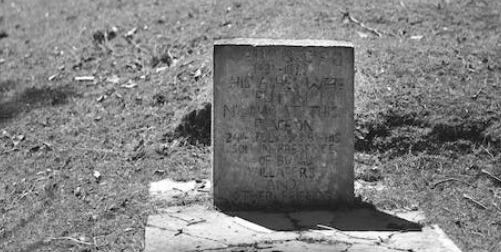Sudden Death. Don’t wait for the worst! Make sure your loved ones know these steps!

Over my planning career that is now far closer to three decades than two, the most upsetting thing I encounter is a premature passing. The emotional blow is profound to be sure. The economic impact is not to be understated. But, the part that breaks my heart is when I see a widow or widower flounder in uncertainty and miss key steps that they could have taken to lessen the financial shock.
WOW JEN, this article is no fun!
Sorry, no puns, quips, or clever phrasing today. This is too important. What I hope to do for you is to provide a step-by-step guide that you may share with your loved ones now when minds and hearts are clear and unencumbered by grief.
So here is my guide for the benefits to claim and the steps to follow when a fed dies in service.
My clients know that they will call me when the worst happens. But what if you don’t have a planner? That’s ok. You can (and must) still have a plan.
Make Sure You're Fully Prepared. Attend Our Next No Cost Survivor Benefits Webinar:
Let’s begin with the four primary in-service death benefits: Basic Employee Death Benefit (BEDB), Survivor Annuity (or lump sum benefit), Beneficiary TSP, and FEGLI Death Benefits.
Basic Employee Death Benefit
The Basic Employee Death Benefit is one of the least understood features of federal service.
Let’s begin with the qualification rules. The federal employee must have been in federal service for at least 18 months. The surviving spouse must have been married to the deceased fed for at least 9 months (unless the death was accidental), OR be the parent of a child born to the deceased fed.
Assuming these are met the BEDB payout is 50% of the employee’s final salary (or average salary if higher) plus a flat additional amount. This amount has a quirky way for calculation. It is based upon a fixed amount of $15,000 adjusted for inflation by the amount of CSRS COLAs every year since 12/01/1987. So, for 2023 that amount calculates to $40,279.37.
So, let’s say our deceased fed is a GS 14 Step 1 (base only). The BEDB would be 50% of $99,908 plus 40,279.37 or $90,233.37. This amount is fully taxable, however there are a few strategies to consider which I will discuss later in this article.
Final note: the BEDB may be payable to a former spouse with a qualifying court order.
Survivor Benefit
The survivor annuity is payable to the spouse of a deceased employee who has at least 10 years of creditable service (18 months of which must be in civilian service). The survivor annuity benefit has the identical requirements for length of marriage or offspring as the BEDB.
Likewise, a survivor annuity may be payable to a former spouse with a qualifying court order.
A survivor annuity may also be claimed in some instances by a surviving child, I will address this in a future article.
If, at an employee’s death, no survivor annuity is payable, a lump sum of the remaining balance in the Civil Service Retirement and Disability Fund plus any applicable interest is payable.
Important note: A survivor benefit MUST be paid for survivors to continue in the Federal Employees Health Benefits (FEHB). This is identical to the rules surrounding FEHB and retirement survivors.
Thrift Savings Plan
In the event of an in-service death of a federal employee the surviving spouse may also receive the employees TSP balance subject to the beneficiary designation that the employee made. Spousal beneficiaries can keep their balance in their TSP beneficiary participant account. Beneficiaries must first be identified and located, their Social Security numbers (or Employer Identification Numbers for estates or trusts) must be obtained and verified, and their addresses and dates of birth must be confirmed. Here is a good reminder to check your beneficiary designations for all your federal benefits.
Federal Employee Group Life Insurance
Lastly, we come to Federal Employee Group Life insurance (FEGLI). If you have followed our articles, you hopefully have at least the Basic life insurance. If you have optional coverages the claim process will be the same. Here again, please use this article as the impetus to check and update your beneficiary designations. FEGLI death benefits are tax-free to your beneficiary.
Steps to Follow
So now that we have identified the possible benefits, what should your survivor do?
The first step is notification. From our list above we have three distinct groups, each of whom will have their own forms and or procedures.
The initial step in this chain should begin with notifying the deceased employee’s agency, typically the HR department. The agency then will contact the agency’s payroll processing department to initiate payment of the employee’s final paycheck and lump sum annual leave (to the beneficiary indicated on form SF 1152).
Next the family member beneficiary should complete and submit forms for the basic employee death benefit.
For a CSRS or CSRS Offset employee the forms to submit are SF2800 (Application for Death Benefits CSRS) and for SF 2800A (Documentation and elections in support of application for death benefits when the deceased was an employee at the time of death).
These forms may be downloaded at www.opm.gov/forms.
For a FERS employee the forms are SF 3104 (Application for Death Benefits FERS) and 3104 B 2800A (Documentation and elections in support of application for death benefits when the deceased was an employee at the time of death).
Likewise, these forms may be downloaded at www.opm.gov/forms.
Note, for either of the above forms the beneficiary will need to provide additional documents including:
- A certified copy of the employee’s death certificate.
- A marriage certificate (For widows or widowers).
The marriage certificate should be submitted with forms SF2800 or SF3104. The Death Certificate should be mailed to the deceased employees Human Resources Department or to the Personnel office designated to service the deceased employee’s agency.
Note: a widow or widower who is claiming benefits for themselves as well as for children should file a single application.
The deceased employee’s personnel office will then mail the complete application and death certificate to OPM Retirement Operations.
Additional Benefits
Now here are additional points that a lot of people initially forget because they are not among the big names in federal benefits. Federal Employees Dental and Vision Program (FEDVIP) and Federal Long Term Care Insurance Partners (FLTCIP).
FEDVIP - Assuming a survivor annuity is being paid the survivor must REENROLL in FEDVIP though the Benefeds website at www.benefeds.com. Interestingly, the survivor annuitant may enroll in FEDVIP even if previously unenrolled.
Long Term Care - If the survivor is enrolled in FLTCIP he or she will need to visit the FLTCIP website (www.ltcfeds.com) to arrange payment from the survivor annuity. If no annuity is to be paid the survivor may arrange to pay directly.
Final Thoughts and Tips
Earlier in the article I mentioned that the Basic Employee Death Benefit is fully taxable. In an of itself this is not a good or bad thing. It is something for which planning mut be taken. Why?
- If your survivor takes the lump sum payment it can impact:
- Taxable income in the year received (Possibly higher tax bracket)
- Eligibility for financial aid (College age children)
- Eligibility and cost for health benefits through insurance exchanges (If FEHB and not be continued).
If your plan is to have your survivor roll the benefit into an IRA she or he will need to make arrangements with your financial institution to complete the rollover paperwork. This process can take a week or two so prepare them. The institution may not immediately recognize this type of transaction and may need explanation.
**Written by Jennifer Meyer, Financial Planner. The information has been obtained from sources considered reliable but we do not guarantee that the foregoing material is accurate or complete. Any opinions are those of Jennifer Meyer and not necessarily those of RJFS or Raymond James. Any information is not a complete summary or statement of all available data necessary for making an investment decision and does not constitute a recommendation. Investing involves risk and you may incur a profit or loss regardless of strategy suggested. Every investor’s situation is unique and you should consider your investment goals, risk tolerance, and time horizon before making any investment or financial decision. Prior to making an investment decision, please consult with your financial advisor about your individual situation. While we are familiar with the tax provisions of the issues presented herein, as Financial Advisors of RJFS, we are not qualified to render advice on tax or legal matters. You should discuss tax or legal matters with the appropriate professional.


